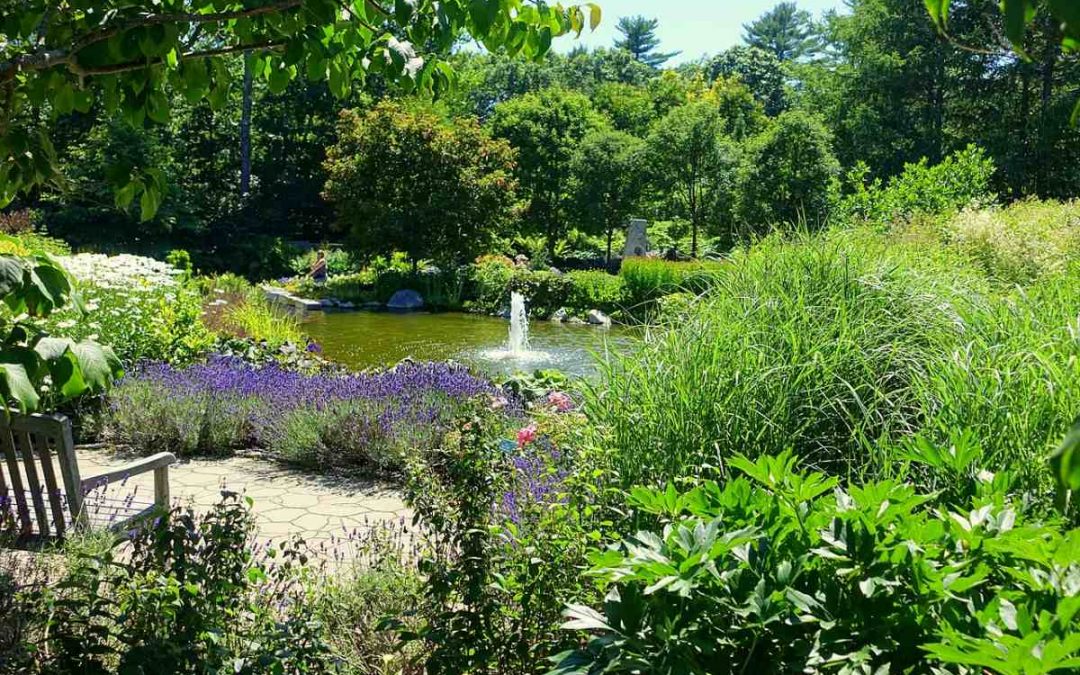Where can we start with this beautiful and historic North American region? The Green Mountains in Vermont, and Bartholomew’s Cobble in Massachusetts are just a few attractions New England has to offer. However, you may sometimes need to help mother nature carry out its duties of maintaining the local ecosystem. By growing the best native plants for New England, you’ll get to support the region’s diverse wildlife and create a beautiful backyard to enjoy apple ciders in the fall.
In this article, we will cover:
- Best Native Plants for New England
- How to Choose Native Plants for Your New England Landscape
- FAQ About New England Native Plants
- Where to Find Native Plants in New England
Best Native Plants for New England
New England lies in USDA plant hardiness zones 3 through 7. This region in the northeast is characterized by hot summers, short springs, and harsh winters with heavy snow. New England is home to many plant species to help you design a colorful, fragrant, and aesthetically pleasing garden. The following native species are able to thrive in the region’s climate and support the local wildlife habitat.
1. Canadian Anemone (Anemone canadensis)
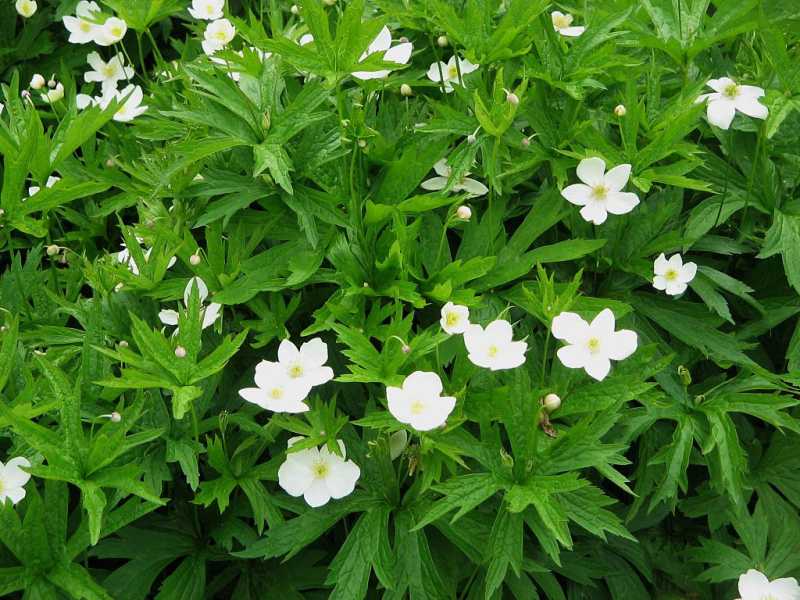
Photo Credit: Meneerke bloem / Wikimedia Commons / CC BY-SA 3.0
Canadian anemone is a herbaceous perennial that can be planted near streams, ponds, and water gardens. It produces masses of upward-facing white flowers that bloom in mid-spring to early summer, preferably in sunny areas. This native plant spreads vigorously from underground rhizomes, and will gradually form large colonies.
Canadian anemone is native to every state in New England, though it does not attract beneficial insects and pollinators.
Plant type: Herb
USDA Hardiness Zone: 3 to 8
Sun: Partial shade to full shade
Soil: Moderately moist, sandy soil
Duration: Perennial
Bloom time: April to August
Water needs: Medium; water weekly or when topsoil is completely dry
Mature height: Up to about 30 inches tall
Potential hazards: Toxic to humans, pets, and other animals if eaten in large quantities
Maintenance: Low; keep the soil moist
2. Virgin’s Bower (Clematis virginiana)
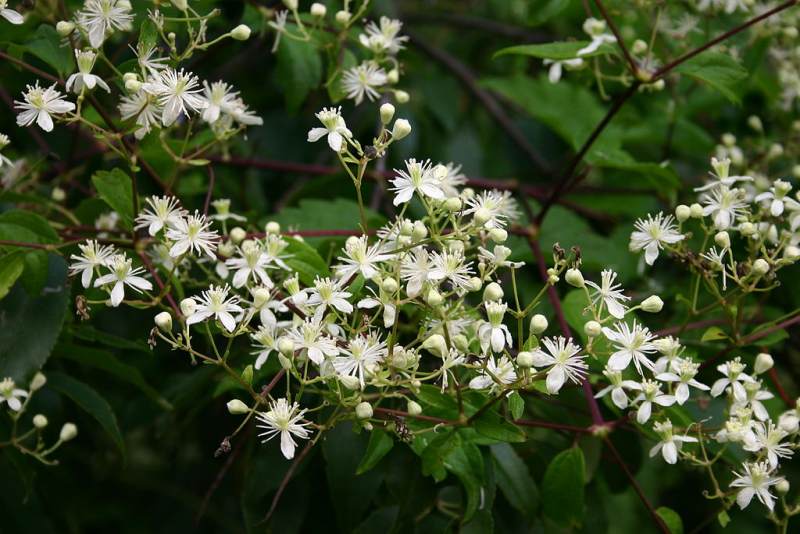
Photo Credit: I, SB Johnny / Wikimedia Commons / CC BY-SA 3.0
Virgin’s bower is a large, deciduous climber with masses of fragrant, white flowers. It can spread aggressively by self-seeding. Plume-like seed heads are left by the passing female flowers, keeping the plant’s visual appeal. Virgin’s bower is great for the local wildlife, attracting both butterflies and hummingbirds.
Native to every state in New England, this shade-tolerant vine is great for covering walls, arbors, or fences.
Plant type: Vine
USDA Hardiness Zone: 3 to 9
Sun: Partial sun
Soil: Organic-rich, well-drained loamy or silty soil
Duration: Perennial
Fragrance: Sweet smelling
Bloom time: July – September
Water needs: Medium to High
Mature height: 12 to 20 feet
Potential hazards: Poisonous to humans, pets, and other animals
Maintenance: Medium
3. Swamp Milkweed (Asclepias incarnata)
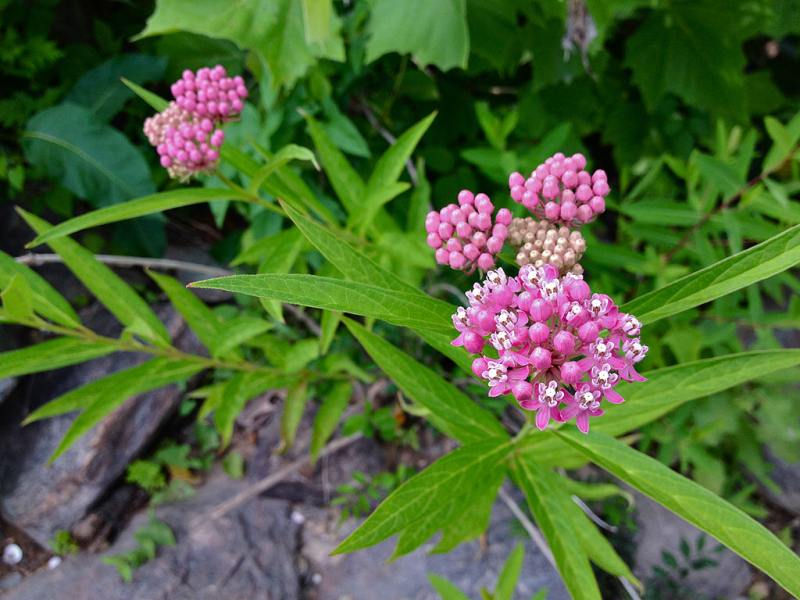
Photo Credit: Fritzflohrreynolds / Wikimedia Commons / CC BY-SA 3.0
Swamp milkweed is a clump-forming perennial that is a great fit for New England gardens. The fragrant, lilac-pink flowers are a great source of nectar for bees, beneficial insects, and butterflies. This plant’s umbels give way to attractive seed pods in the fall, adding to its visual appeal. Swamp milkweed is the perfect plant for cottage or butterfly gardens.
Milkweed species are host plants for Monarch butterflies and critical for their survival. Help these beautiful creatures reverse their fortune by adding this native plant to your garden.
Plant type: Herb
USDA Hardiness Zone: 3 to 9
Sun: Full sun to partial shade
Soil: Organically rich, slightly acidic, well-drained soil
Duration: Perennial
Fragrance: Sweet smelling
Bloom time: Midsummer to fall
Water needs: High
Mature height: 4 to 6 feet
Potential hazards: Poisonous to humans and animals in large quantities
Maintenance: Low
4. Serviceberry (Amelanchier)
Known for its drought tolerance, serviceberry is a New England native perennial that can be used as an attractive, ornamental shrub. In mid-spring, compact clusters of white flowers emerge just before the leaves. They are followed by sweet berries in early summer, consumed by both humans and birds.
Adding beauty to any landscape, the foliage of light-green leaves turns to shades of yellow and orange in the fall. Serviceberry can be planted in each of the region’s six states.
Plant type: Shrub
USDA Hardiness Zone: 4 to 9
Sun: Full sun or partial shade
Soil: Loamy or sandy; well-drained
Duration: Perennial
Fragrance: Lightly scented
Bloom time: Spring and summer
Water needs: Low
Mature height: 3 to 16 feet
Maintenance: Low
5. Nannyberry (Viburnum lentago)
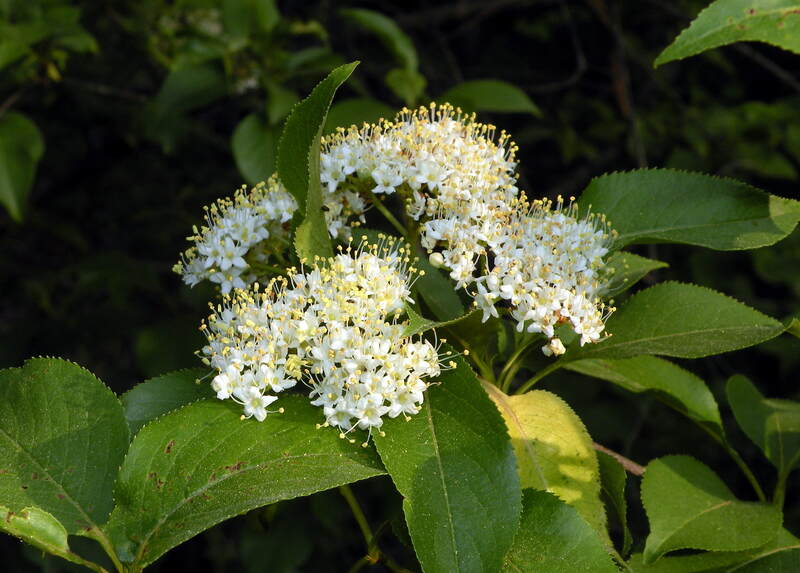
Photo Credit: Doug McGrady / Flickr / CC BY 2.0
Nanyberry is a native perennial that can be used as a large, deciduous shrub or a multi-stemmed small tree. It is admired for its attractive fall foliage and eye-catching flower clusters. The creamy-white flowers emerge from large buds that are held above the foliage. They are non-fragrant and loved by pollinators such as bees and butterflies.
In fall, the blossoms give way to bluish-black berries with red bright stalks. These berries are edible, and can be used to make tasty jams for the entire family. Nannyberry is a durable, slightly shade-tolerant plant that can be grown throughout New England.
Plant type: Shrub or small tree
USDA Hardiness zones: 2 to 8
Sun: Full sun to partial shade
Soil: Clay, loam, sand, moist, well-drained soil
Duration: Perennial
Fragrance: Wet sheep wool when over-ripe
Bloom time: April – June
Water needs: Average
Mature height: 10 to 20 feet
Maintenance: Low
6. Bee Balm (Monarda)
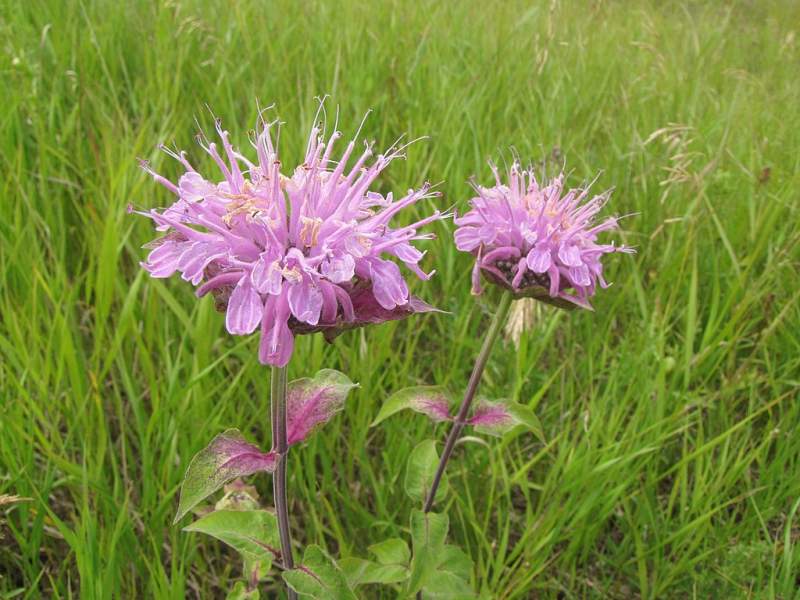
Photo Credit: USFWS Mountain-Prairie / Wikimedia Commons / Public domain
Bee balm is one of the showiest summer-blooming perennials you can plant in your front or backyard. It has very distinctive flower-heads that create captivating border displays. Bee balm’s blooms consist of two-lipped tubular flowers which rest upon a whorl of decorative bracts. It combines well with other summer perennials such as phlox and daylilies.
Bee balm is another native plant that supports the local wildlife, attracting the likes of hummingbirds and butterflies. If you wish to have a flamboyant garden, beebalm cultivars don’t disappoint. They are available in shades of red, purple, violet, white, and pink.
Plant type: Perennial plant
USDA Hardiness Zone: 4 to 9
Sun: Full sun, partial shade
Soil: Chalk, clay, loam, sand
Duration: Perennial
Fragrance: Minty aroma when leaves are crushed
Bloom time: July – August
Water needs: Average
Mature height: 10 to 12 inches
Maintenance: Average
7. Winterberry (Ilex verticillata)
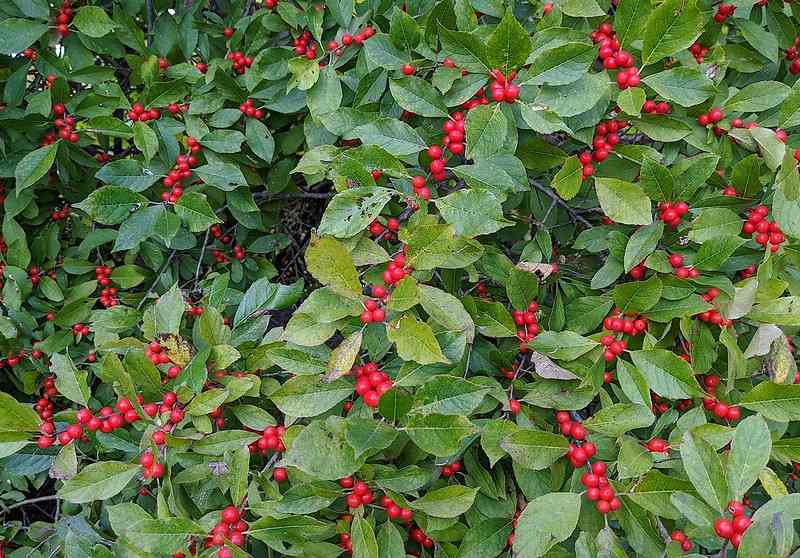
Photo Credit: Under the same moon… / Flickr / CC BY 2.0
Living up to its name, winterberry adds color to the winter landscape. It is a slow-growing shrub that produces small, greenish-white flowers in late spring or early summer. These flowers are followed by a profusion of red berries that are eaten by birds. Both male and female shrubs are needed to produce berries. Additionally, the male must bloom at the same time as the female plant. Winterberry needs full sun to bear plenty of fruits and maintain its aesthetic appearance.
Plant type: Shrub
Hardiness zones: 3 to 9
Sun: Full sun to partial shade
Soil: Clay, loam, sand, moist, acidic
Duration: Perennial
Bloom time: April – July
Water needs: Medium to high
Mature height: 3 – 15 feet
Potential hazard: Mild toxicity to humans, pets, and other animals if ingested.
Maintenance: Low
8. Red Maple (Acer rubrum)
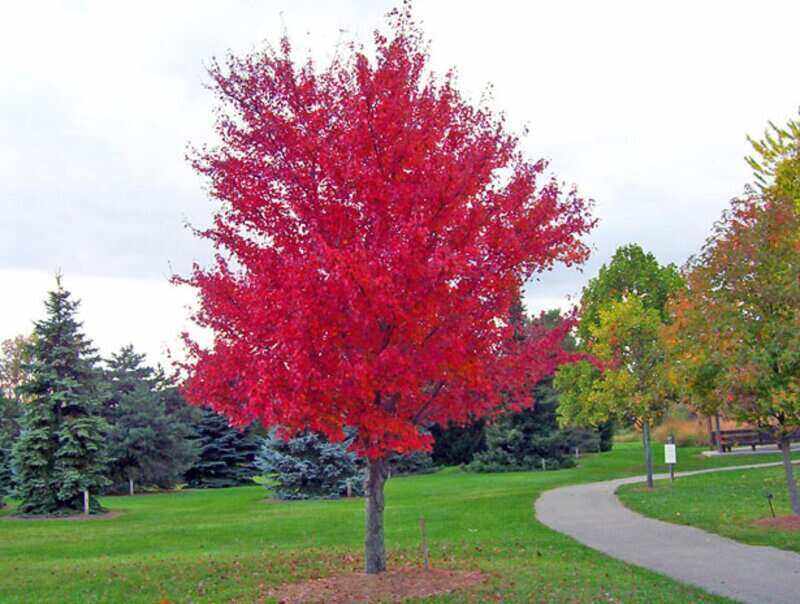
Photo Credit: Public Domain Pictures
Red maple is a popular plant in New England that’s known for its lovely fall color. It is a fast-growing, deciduous tree that can provide enough shade to counter the scorching sun. Tiny red flowers appear just before the leaves in early spring, followed by red fruits.
Red maple is just as attractive during the winter season, mostly due to its smooth gray bark. With very little pruning required, this native tree serves as a great specimen plant for lawns and streets throughout the northeast region.
Plant type: Tree
USDA Hardiness Zone: 3 to 9
Sun: Full sun, partial shade
Soil: Chalk, clay, loam, sand
Duration: Perennial
Fragrance: Sweet cherry or almond flower scent
Bloom time: March – April
Water needs: Average
Mature height: 40 to 70 feet
Potential hazards: Toxic to horses
Maintenance: Low
9. Seaside Goldenrod (Solidago sempervirens)
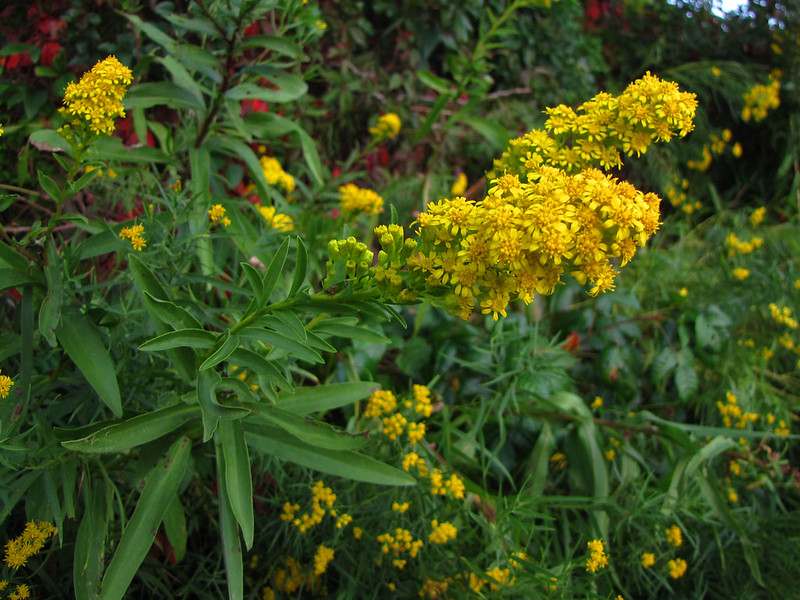
Photo Credit: Katja Schulz / Flickr / CC BY 2.0
Seaside goldenrod is a herbaceous, perennial wildflower that requires very little maintenance, easily grown in every New England state. It has a tight clump of evergreen basal leaves that bloom in late summer to fall. These leaves bear large, deep-yellow flowers that are an excellent nectar source for honeybees and butterflies. Additionally, the dried seeds serve as a valuable food source for local birds.
Seaside goldenrod is highly salt-tolerant, making it a great choice of plant for coastal landscapes.
Plant Type: Wildflower
USDA Hardiness Zone: 3 to 10
Sun: Full Sun
Soil: Loam and Sandy soils
Duration: Perennial
Fragrance: Sweet-smelling
Bloom Time: Late summer to fall
Water Needs: High
Mature Height: 2 to 6 feet
Maintenance: Low
10. Pennsylvania Sedge (Carex pensylvanica)
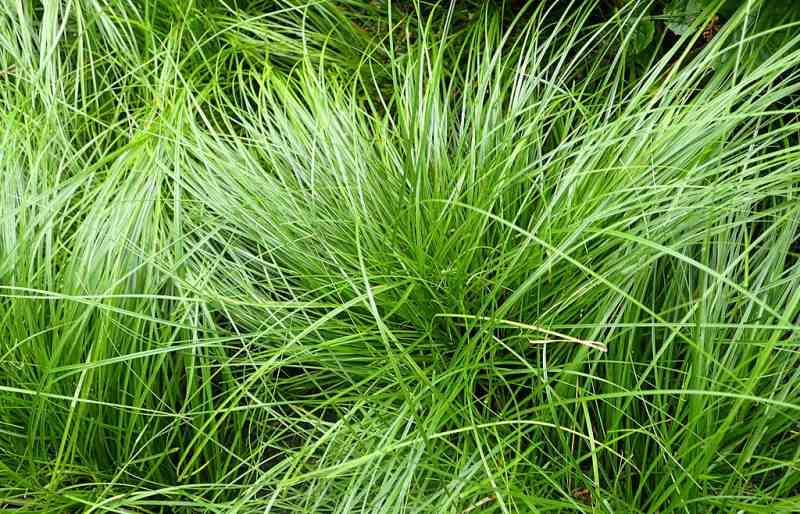
Photo Credit: Krzysztof Ziarnek, Kenraiz / Wikimedia Commons / CC BY-SA 4.0
Pennsylvania sedge is a low-growing, semi-evergreen perennial that forms a tuft of green arching leaves in spring and summer. It spreads via underground rhizomes to form large colonies. It is a valuable and shade-tolerant groundcover, making it an ideal turf alternative for dry, shady areas.
Pennsylvania sedge can attract birds, butterflies, and other pollinators. It is drought-tolerant and very easy to grow, making it a popular addition to lawns across New England.
Plant type: Grass/Grass-like
USDA Hardiness Zone: 3 to 8
Sun: Full sun, partial shade, full shade
Soil: Adaptable; dry to moist soils
Duration: Perennial
Bloom time: May to July
Water needs: Low
Mature height: Up to about 10 inches tall
Maintenance: Low
11. Beach Plum (Prunus maritima)
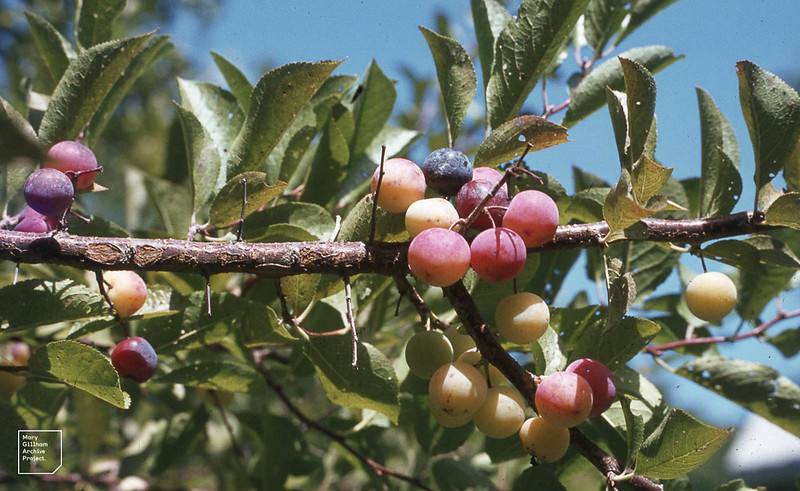
Photo Credit: Dr Mary Gillham Archive Project / Flickr / CC BY 2.0
Beach plum is a dense, suckering shrub with white flowers and glossy, dark green leaves. It was a staple food source for early settlers in this part of North America. It bears fruits which ripen from August to October, attracting birds and other wildlife. Unfortunately, the seeds found inside the fruits are toxic to humans and should never be eaten. For this plant to thrive, it needs a sunny location with good drainage. Beach plum can provide your garden with a beautiful fall color, able to grow throughout the region with the exception of Vermont.
Plant Type: Shrub
USDA Hardiness Zone: 3 to 8
Sun: Full sun
Soil: Sandy or gravelly soils
Duration: Perennial
Fragrance: Sweetly-scented
Bloom Time: April – June
Water Needs: Average
Mature Height: 3 to 6 feet tall
Potential Hazards: Toxic to humans; seeds found inside fruits should never be eaten
Maintenance: Low
How to Choose Native Plants for Your New England Landscape
With many plant species native to New England, you’ll need to consider several key points before choosing the right garden plants:
- Your property’s plant hardiness zone
- Soil type
- Sun exposure levels
- Water availability
- Your area’s climate
- Desire to obtain a low-maintenance landscape
It is important to note that some plants might be native to a certain state, such as Maine, but not to every county or area. The climate in coastal Maine is not the same as in the mountains, potentially affecting a plant’s growing conditions.
FAQ About New England Native Plants
New England may be classified as one region, but let’s not forget that it includes six distinct states. Whichever part of New England you’re from, you tend to take pride in your own state flower. All of the state flowers are native to New England, with some able to grow across the entire Northeast.
• Vermont: Red Clover (Trifolium pratense)
• Massachusetts: Trailing arbutus (Epigaea repens)
• Connecticut: Mountain laurel (Kalmia Latifolia)
• Maine: White pine oak (Pinus strobus)
• New Hampshire: Purple lilac (Syringa vulgaris)
• Rhode Island: Common blue violet (Viola sororia)
Invasive plants are a threat to the local ecosystem and survival of many indigenous species. As a result, every state in the US works hard to identify and eliminate invasive species that disrupt the proper growth of native plants. The six states of New England are no exception.
While some can be found more in certain states than others, here are some of the region’s invasive plant species:
• Amur maple (Acer ginnala)
• Mexican fireweed (Kochia scorparia)
• Flowering rush (Butomus umbellatus)
• Garlic mustard (Alliaria petiolata)
• Japanese sedge (Carex kobomugi)
In addition to the plants mentioned above, here are some more New England native plants for you to consider:
• Coastal sweet pepperbush (Clethra alnifolia)
• Highbush blueberry (Vaccinium corymbosum)
• Elderberry (Sambucus)
• Pennsylvania bittercress (Cardamine pensylvanica)
• Pagoda dogwood (Cornus alternifolia)
• Foamflower (Tiarella cordifolia)
• New England aster (Symphyotrichum novae-angliae)
Where to Find Native Plants in New England
One of the many great things about native plants is that they can be found throughout nature. You may sometimes find these plants growing near your own property. If a plant is accustomed to the area’s climate, then it will naturally grow with little to no help from us humans.
You can find several plant nurseries and garden centers that specialize in plants native to your state or area.
Native plants are an excellent low-maintenance addition to your New England landscape. To further minimize your outdoor chores, hire a lawn care pro near you to handle your yard’s mowing, edging, and trimming.
Main Photo Credit: Little Pond – Coastal Maine Botanical Gardens / Daderot / Wikimedia Commons / CC0

